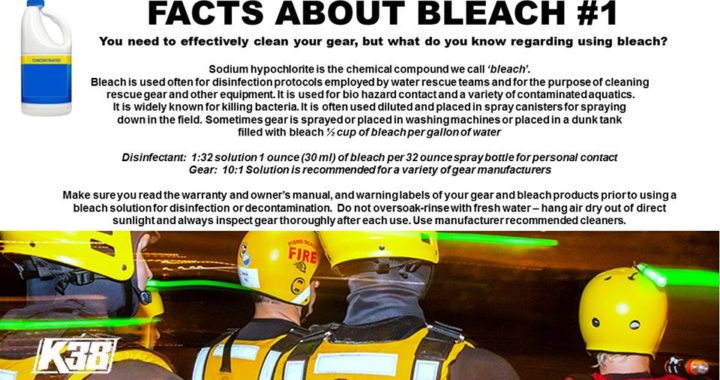FACTS ABOUT BLEACH #1
You need to effectively clean your gear, but what do you know regarding using bleach in some situations?
Natural and normally occurring events, floods, inclement weather, industrial areas, runoff, the list goes on! Your equipment and Personal Protective Equipment are exposed to harsh exposures. Don’t take this for granted, its a serious economical consideration for when to replace, how to care and what are the cause and effects of decontamination on specific products!
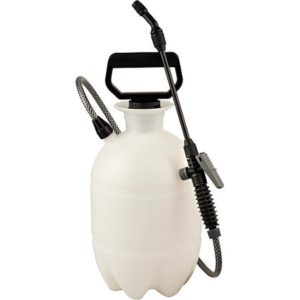

SPRAY AWAY
Sprayers come in all sizes, from handheld pump spray bottles to larger spray cannisters. Depending upon which one you use, the nozzle and interior pressure will result in good or poor spray control.
Sodium hypochlorite is the chemical compound we call ‘bleach’.
Bleach is used often for disinfection protocols employed by water rescue teams and for the purpose of cleaning rescue gear and other equipment.
Be careful with the effects of bleach mixed with water as a spray, do not inhale, use proper PPE.
It is used for bio hazard contact and a variety of contaminated aquatics. It is widely known for killing bacteria.
It is often used diluted and placed in spray canisters for spraying down gear/PPE in the field.
If you have responded to a disaster zone and have operated your Rescue Water Craft in contaminated water you may have a bigger problem than simply washing down!
The same goes for your personal protective equipment. Both may need to be destroyed.
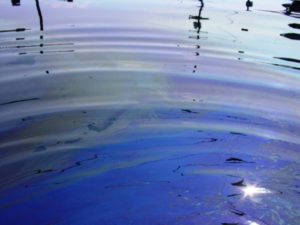
You will have to contain and trap the water from the exhaust cooling system and dispose of it in a Hazmat situation.
Spend time now to prepare for the future
Hopefully you have not endured any issues from exposure, but your PPE may be a total loss. Prepare for replacement.
That begins with annual budget planning if you are in high risk zones for potential flooding. Make sure you price out by today’s economy a full replacement value on your equipment and PPE and have it prepared in advance. Emphasis is placed on this critical budget assessment repeatedly in this article from experience.
Rubber hoses and plastic may be destroyed on your Rescue Water Craft.
You may have to replace your seats as well and will need to clean out your bilge.
Budgets must be adjusted for ‘total loss’ or replacement. There may not be recovery funds such as grants or disaster relief. Volunteer departments may be affected most for deterioration of PPE/equipment.
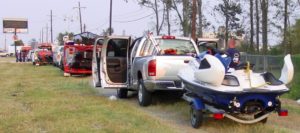
Plan on your agency disposable clause for gear for situations of exposure, loss or damage. Make sure your budget includes this annually for a buffer so that your program can continue to thrive responsibly.
Not a feat for anyone, and could be very expensive to remedy.
This is one of the associated costs or risks of service work. Depends upon which way we look at the solutions.
Rule of thumb-everything is disposable and will be replaced, but not you!
Shawn Alladio – 2018
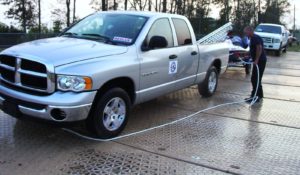
REVIEW
Chlorine bleach is a chemical that is a common household product with properties that make it useful for cleaning and disinfecting and may have from four to six % concentration or in some cases up to nine %. It’s a diluted mixture of sodium hypochlorite (the active ingredient) and water. Sodium hypochlorite is a powerful oxidizer. Oxidation reactions are corrosive and solutions burn skin and can cause permanent eye damage in concentrated forms.
In closed areas with poor ventilation use an appropriate mask and or proper PPE.
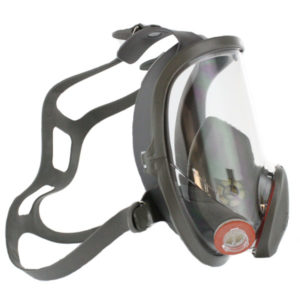
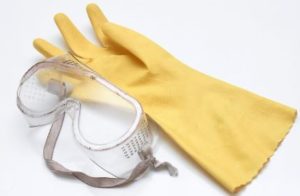
Safety handling recommendations:
1. Wear effective eye protection and clothing protection from spills
2. Use of rubber or nitrile gloves to avoid hand contact
3. Clothing will be stained if contact is made or fade colors and break down material
4. Use only in well ventilated areas, vapors will build up and cause eye or respiratory irritation
5. Vigorously wash hands wild mild soap
6. Have an eye wash rinse readily available in case of contact
7. It is corrosive to bare metals
8. Do not drink
9. Do not blend with other cleaning agents or ammonia, explosions can occur if sufficient quantities are
mixed
10. Follow all the applicable safety precautions and product label instructions.
Bleach is hazardous when combined with other products.
Bleach will dry immediately when making contact with skin. It can be an irritant and will dry your skin out right away. The natural moisture in your eyes combines with liquid bleach to form an acid. Rinse your eye with lukewarm water right away, and remove any contact lenses, and it can be inhaled.
Be sure when using bleach to IMMEDIATELY rinse, rinse, rinse with fresh clean water. Do not leave bleach residue on your gear. It is corrosive!
Have any questions? Join the Rescue Water Craft Association
and discover what your community is doing to modernize standards, safety and reduce liability!
Content Creator – Shawn Alladio cares most about her community and the culture surrounding the safety of event service providers and Rescue Water Craft operators, working hard and dedicated towards protecting their reputation, distributing safety information and continuing to train these amazing individuals to the highest standards of care.
